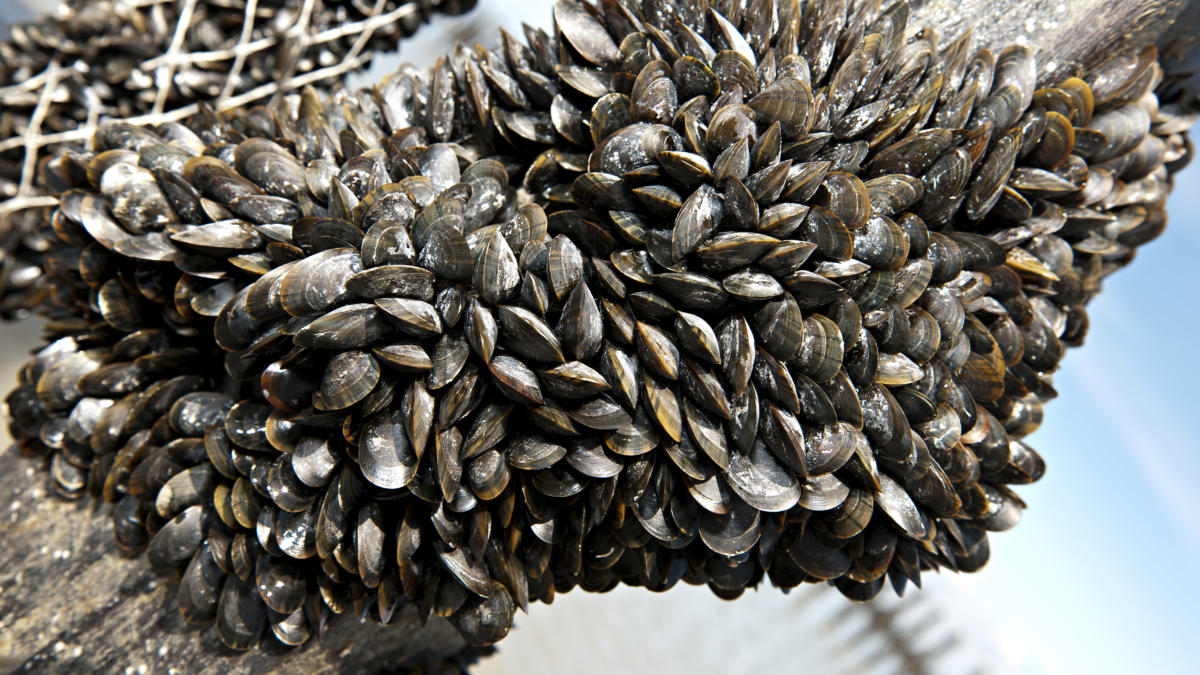Characterization of the bacterium Francisella halioticida from the blue mussel Mytilus sp.
Since 2014, mass mortalities of the marine mussel Mytilus sp. are observed in France. The bacterium Francisella halioticida has been proposed as responsible for these mortalities, due to its lethal effect on abalone and scallops from Japan. In this project, we isolated and characterized, phenotypically and genetically, five strains of F. halioticida from mussels. These results show that the species F. halioticida can be divided into two subspecies: one containing only the isolate FR21, resulting from this study, and the other grouping all the other isolates, which are not clones between them. Genetic analyses have also predicted in silico virulence genes present in this species, highlighting the absence of an island of pathogenicity in the least virulent isolate, FR22b.
The two most virulent isolates, FR22c and FR22d, were found to be pathogenic to juveniles and adults with lethal doses 50% lower than 104 CFU/individual. The study of mortality cases that occurred in Normandy and Brittany during the project period showed a different detection of strains in moribund and apparently healthy individuals. In addition, a targeted detection of F. halioticida in a highly infected individual made it possible to highlight the most affected organs (the gills, the connective tissue around the stomach and the Bojanus organ). This immunolabeling study, in addition to an electron microscopy study, demonstrated the passage of this bacterium to the intracellular level, a mechanism characteristic of species of the genus.
In order to understand the development of francisellosis, the immune response of mussels was studied using a low virulence strain, FR21, and a highly virulent strain, FR22c. In this first global approach aimed at studying the response of a protostomian to a pathogenic Francisella species, the hemolymph was used. The use of transcriptomics and proteomics has made it possible to better understand the response of mussels by identifying certain potential factors capable of influencing resistance to the disease. A preliminary in silico identification study of antimicrobial peptides revealed a great diversity of peptides belonging to several families or subfamilies of antimicrobial peptides. The analysis of the differential expression in the hemocytes and the gills of three families, the myticins, the myticusins and the mytimacins highlighted a decrease in the expression of the myticins during an infection. This study also made it possible to detect and identify the first myticusines outside the M. coruscus species.
Thesis jury :
Mr. Franck Vandenbulcke (University Professor, University of Lille): Rapporteur
Mrs. Marie-Agnès Travers (HDR Research Officer, Ifremer): Rapporteur
Mrs. Delphine Destoumieux-Garzon (Research Director, CNRS): Examiner
Mrs. Melissa Palos-Ladeiro (HDR Lecturer, University of Reims Champagne-Ardenne): Examiner
Mr. Joël Henry (University Professor, University of Caen Normandy): Examiner
Mr. Erwan Corre (Research Engineer, Biology Station of Roscoff -CNRS) : Examiner
Mrs. Céline Zatylny-Gaudin (University Professor, University of Caen Normandy): Thesis Director
Mrs. Maryline Houssin (HDR Researcher, LABÉO): Co-Thesis Director

